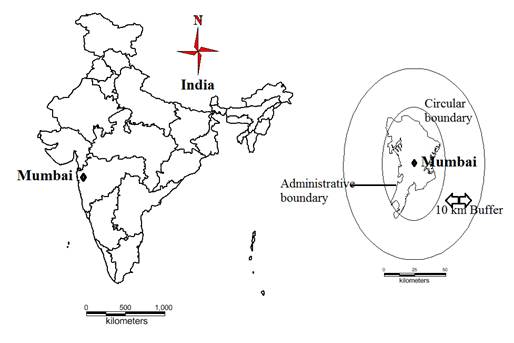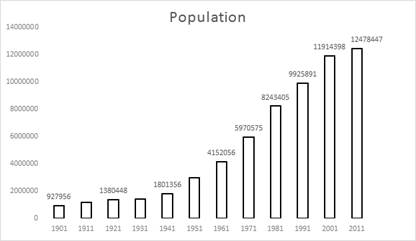 |
URBAN FOOTPRINT OF MUMBAI - THE COMMERCIAL CAPITAL OF INDIA |
 |
|
Ramachandra. T.V 1,2,3,*, Bharath H. Aithal2, Sowmyashree M.V1 |
| Citation: Ramachandra T. V., Bharath H. A. and Sowmyashree M. V., 2014. Urban footprint of Mumbai - the commercial capital of India, Journal of Urban and Regional Analysis, VI (1): 71– 94 |
Study Area Mumbai is the capital of the Indian state of Maharashtra. It is located at 18°55’N and 72°50’ E and is bounded by the Arabian Sea in the west. It is the most populous city in India, and the sixth most populous city in the world and it is also considered as the commercial capital of India that serves as an economic hub of India. In the last three decades, the city saw tremendous growth in the infrastructure development and urban expansion. Mumbai has a population density of 4583 persons per square kilometre (Census, 2001). Mumbai urban agglomeration is ranked third after Tokyo and Mexico City (United Nations, 2012). The city started experiencing urbanization and industrial expansion during 1860s, which gradually led to the rise of more urban areas. Mumbai is formed of seven islands and the expansion of Mumbai resulted in the bulging of the islands causing a scarcity of land. The study has been carried out for Mumbai city considering a 10 km buffer. Figure 1 below shows the Mumbai administrative boundary along with the 10 km buffer.
Table1: Area, Population and Population density of Mumbai (Source: Census India: 1971-2011) 2.2 Urban Development Planning and Infrastructure
|
| * Corresponding Author : | |||
| Dr. T.V. Ramachandra Energy & Wetlands Research Group, Centre for Ecological Sciences, Indian Institute of Science, Bangalore – 560 012, INDIA. |
Tel : 91-80-23600985 / 22932506 / 22933099, Fax : 91-80-23601428 / 23600085 / 23600683 [CES-TVR] E-mail : cestvr@ces.iisc.ac.in, energy@ces.iisc.ac.in, Web : http://wgbis.ces.iisc.ac.in/energy |
||

